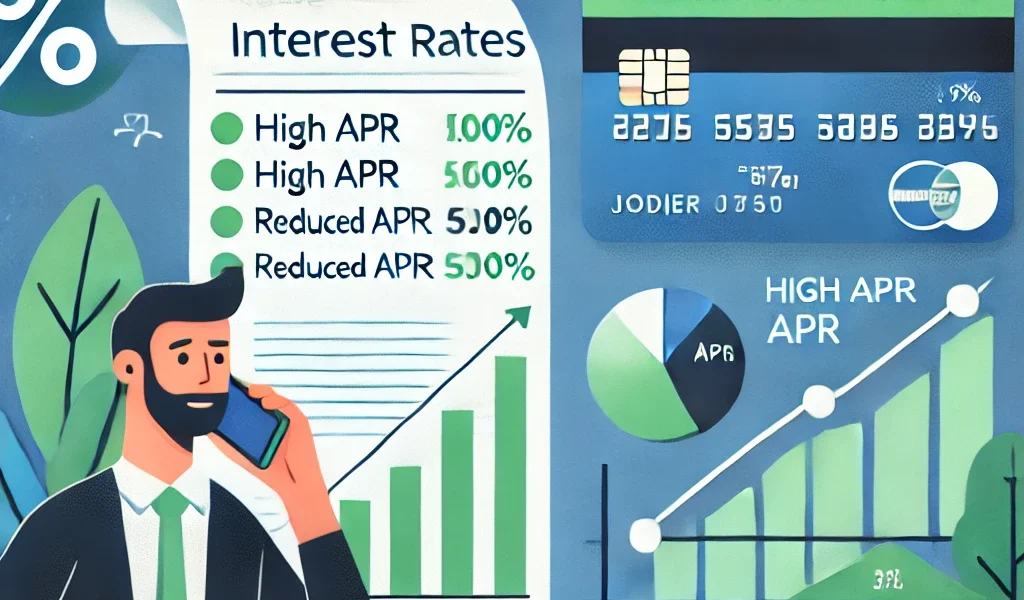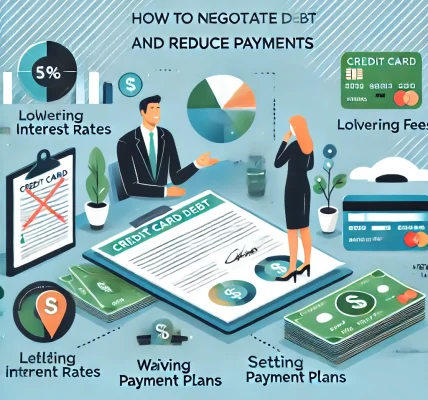Introduction
High-interest rates on credit cards can drain your finances, making it harder to pay off debt and achieve financial freedom. The good news? You can negotiate lower interest rates! Many people don’t realize that credit card companies are often willing to lower rates if you ask the right way.
This guide will walk you through the step-by-step process of negotiating lower interest rates, offering tips and strategies to improve your chances of success.
Why Lowering Your Credit Card Interest Rate Matters
A high-interest rate means you pay more money over time, making it difficult to reduce debt. Here’s how negotiating a lower rate can benefit you:
✅ Save Money – Less interest means more of your payment goes toward reducing the principal.
✅ Pay Off Debt Faster – Lower rates help you become debt-free sooner.
✅ Reduce Financial Stress – Lower monthly payments ease the burden on your budget.
✅ Improve Your Credit Score – Paying down debt efficiently can boost your credit score over time.
Step 1: Know Your Current Interest Rate
Before negotiating, check your current Annual Percentage Rate (APR) on your latest credit card statement or by logging into your account online.
Understanding APR
- Standard Purchase APR: The rate applied to purchases if you carry a balance.
- Cash Advance APR: The higher rate for cash withdrawals.
- Penalty APR: A very high rate applied if you miss payments.
💡 Pro Tip: Compare your rate with the national average. As of 2024, the average credit card APR is around 20%. If yours is higher, you have strong grounds for negotiation.
Step 2: Check Your Credit Score & History
Credit card companies are more likely to lower your interest rate if you have:
- A good credit score (670 or higher)
- A history of on-time payments
- A long-standing relationship with the issuer
🔹 How to Check Your Score:
- Use free credit score services from Experian, Equifax, or TransUnion.
- Check your bank’s online banking portal, as many offer free credit score tracking.
If your score is low, consider improving it first by making consistent on-time payments and reducing your credit utilization.
Step 3: Research Competing Offers
To strengthen your negotiation position, find lower interest rate offers from competing banks or credit unions.
✅ Visit websites like NerdWallet, Credit Karma, or Bankrate to compare current credit card rates. ✅ Check pre-approved credit card offers in your mailbox. ✅ Call banks directly to inquire about their best interest rates.
Example: If your credit card APR is 24% but another bank offers 14%, use this information during negotiation.
Step 4: Call Your Credit Card Issuer
Once prepared, call the customer service number on the back of your card and ask to speak to a retention specialist or account manager—they have more authority to adjust rates.
What to Say (Script Example)
📞 You: “Hello, I’ve been a loyal customer for [X] years, and I always make my payments on time. I noticed my interest rate is [X%], which is higher than what other companies are offering. I’d love to keep my business with you, but I need a lower rate. Can you help me with that?”
💳 Representative: “Let me check what we can do.”
📞 You: “I appreciate it. I recently received an offer from [Bank Name] for a [X%] APR. I’d prefer to stay with your company, but I need a lower rate to manage my payments effectively.”
Possible Outcomes
- They agree and lower your rate immediately – Great! Get confirmation in writing.
- They offer a temporary lower rate – Accept it if it helps, but keep negotiating for a permanent reduction.
- They refuse to lower the rate – Ask to speak to a supervisor or try again later.
Step 5: Consider Alternative Strategies
If your issuer won’t lower your rate, explore these options:
1. Balance Transfer to a 0% APR Card
- Transfer your balance to a card with a 0% introductory APR (often 12-18 months).
- Ensure you pay off the balance before the promotional period ends.
- Watch out for balance transfer fees (usually 3-5%).
2. Consolidate Debt with a Personal Loan
- Personal loans often have lower fixed interest rates.
- Convert high-interest revolving credit into a structured payment plan.
3. Pay More Than the Minimum
Even if your rate stays the same, paying more than the minimum due reduces interest costs over time.
4. Improve Your Credit & Try Again
If denied, work on your credit score and call again in a few months. Issuers may reconsider if your credit profile improves.
Common Mistakes to Avoid
🚫 Not Being Prepared – Know your rates, credit score, and competitor offers before calling.
🚫 Accepting the First Offer – Companies may offer a small discount at first, but push for better terms.
🚫 Being Rude or Aggressive – Stay polite and professional; customer service reps are more likely to help cooperative customers.
🚫 Ignoring Alternative Solutions – If negotiation fails, explore balance transfers, personal loans, or other strategies.
Final Thoughts
Negotiating lower credit card interest rates is a powerful tool to save money and pay off debt faster. Many people never ask, but those who do often get results.
By taking control of your interest rates, you can build a stronger financial future and reduce unnecessary expenses.




